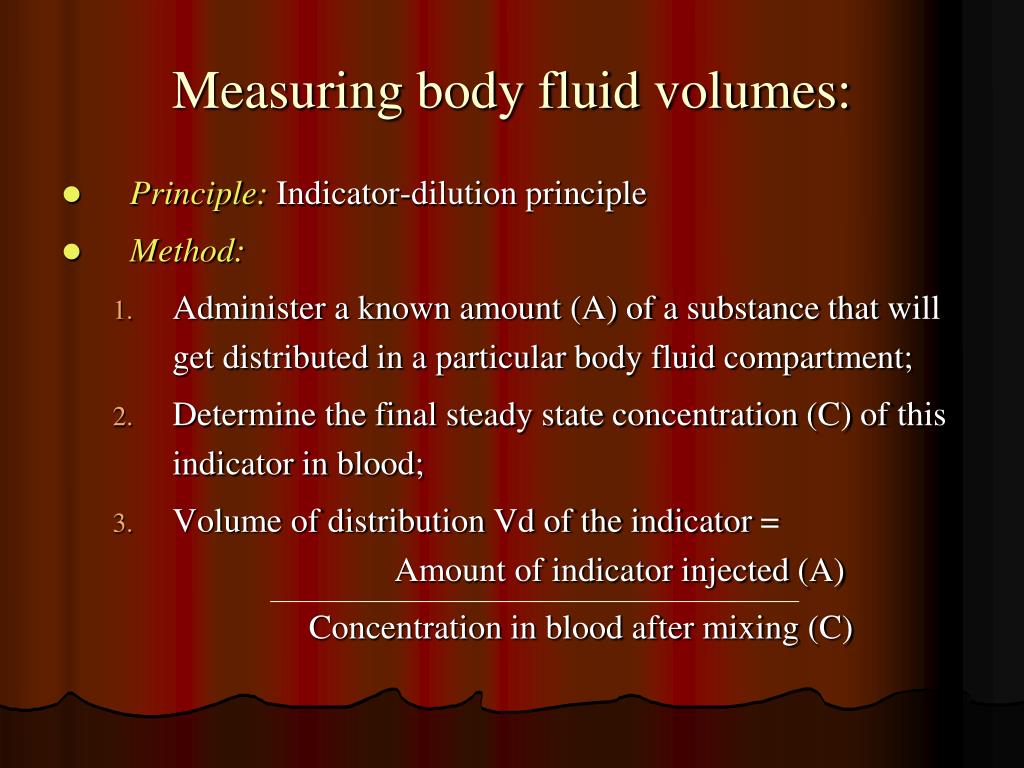
Materials travel between cells and the plasma in capillaries through the IF. Blood plasma is the second part of the ECF.

The interstitial fluid (IF) is part of the extracellular fluid (ECF) between the cells. The methods that have been employed for the measurement of total body water may be considered under three general headings: desiccation procedures, body specific gravity measurements, and dilution techniques.ĭESICCATION The first estimates of body water content were accomplished with desiccation procedures. study is to measure the amount of water loss from each body fluid compartment and selected organs using more direct methods, and to identify the organs. Figure 26.1.2 Fluid Compartments in the Human Body: The intracellular fluid (ICF) is the fluid within cells. Cellular function itself is affected by abnormal fluctuations in water content. It furnishes the means of transport of virtually all enzymes, substrates, metabolites, gases, electrolytes, antibodies, and other substances that must be moved to and from the cell. Its presence is essential to the great mass of chemical reactions on which life depends. We have estimated the compartmental distribution of body fluids by means of the Bioimpedance Spectroscopy (BIS) analysis in a hypertensive cohort compared to.

Water furnishes the preponderant single molecular element in the fabrication of tissue. This is not surprising when one pauses to consider the overwhelming importance of water in the body economy. A satisfactory method for the measurement of total body water in the living subject has long been sought.


 0 kommentar(er)
0 kommentar(er)
